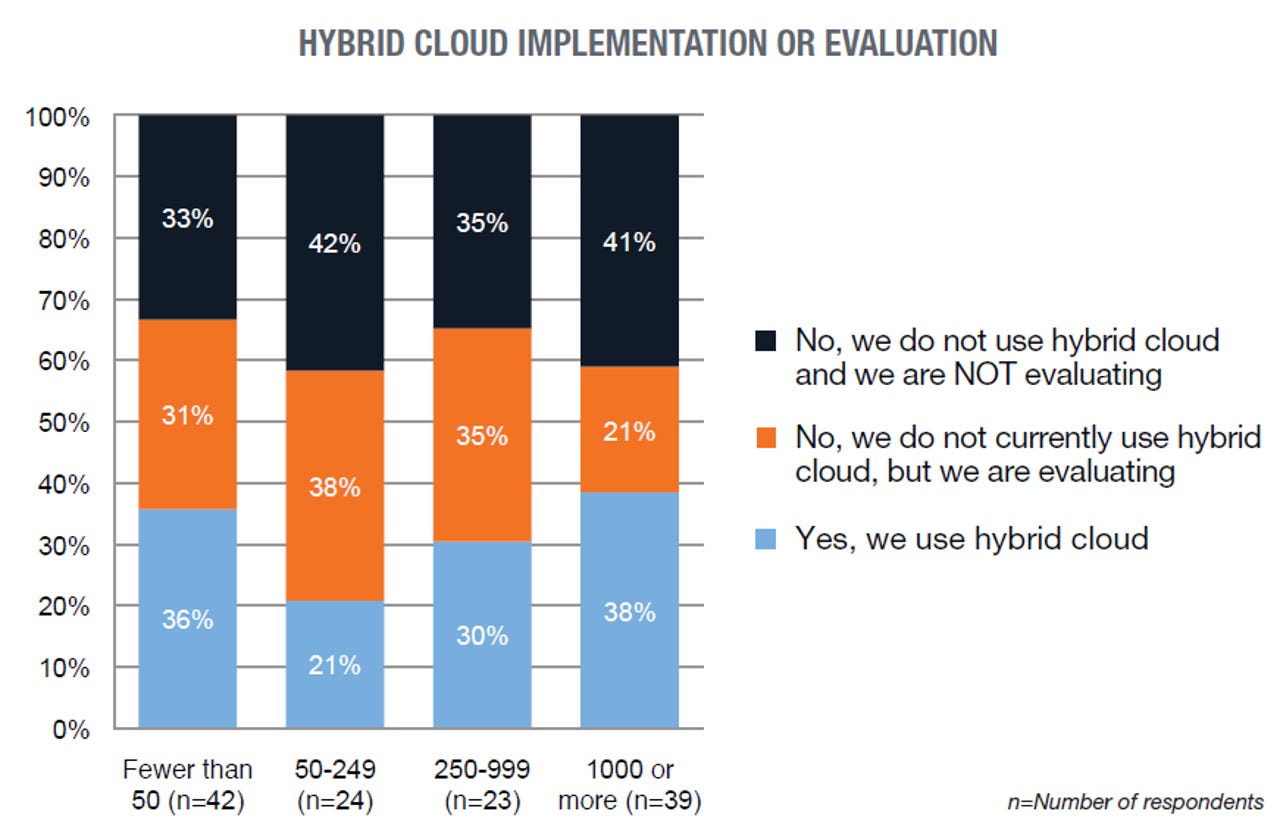Hybrid cloud: Which way will the balance tip between public and private?

You can't talk to any technology vendor that touches a datacenter without mentioning the three flavors of cloud computing: private, hybrid and public. Meanwhile, enterprise customers are working to integrate the three styles of cloud computing.
Here's the hurdle: Determining what's the proper mix today, and figuring out how the flavors will split up in the future.
Today, it's all about the hybrid cloud. Enterprises are using public cloud services, but also have a ton invested in their current infrastructure. This infrastructure won't simply be dumped. The public cloud crowd would like you to believe that everything will go their way, but it's not reality.

Why?
- Depreciation. Simply chucking infrastructure you can write off doesn't make sense.
- Regulation. Some companies need their own facilities for regulatory purposes.
- Culture. It will take time and a lot of boldness that Corporate America lacks to be 100 percent public cloud.
- Time. The hybrid cloud may be around for decades.
All of that said, there are a few tweaks to the cloud definitions that should be added.
1. Private cloud, more often than not, is pitched by a hardware vendor selling you a server. Private cloud revolves around the idea that an enterprise has to deliver a secure and distinct service that only it can control. To me, private cloud is basically a virtualized datacenter maybe with a self-service twist to provision compute resources. Private cloud as a term is dying.
2. Hybrid cloud is one where you run your own infrastructure and then connect it with public cloud resources for bursting, dev projects and, increasingly, mission-critical apps. Hybrid cloud is the reality today, and also tomorrow in some fashion.
3. Public cloud is your standard infrastructure-as-a-service approach where you tap into Amazon Web Services, Google, IBM's SoftLayer, Microsoft Azure or other on-demand compute resources from HP, Oracle and Rackspace. Think of it as a utility approach where you pay for what you use.
Now you can waste your time arguing about cloud definitions and what model serves you best, but your time is better spent trying to gauge where the IT market will be going. Clearly, enterprises will have hybrid models for the foreseeable future. But you need to assess what hybrid will mean for your organization. Consider the following:
- Today, "hybrid" at your company probably means you own 90 percent of the infrastructure with 10 percent of computing power being pulled from the public cloud. What does that percentage look like in five years' time?
- If that percentage tips more to 50-50 between infrastructure you run and public cloud services, then you need to ask why you're buying servers today.
- What do the long-term cost models look like for public versus private cloud?
- How equipped are you to run your own infrastructure? Is that chore something you want to do?
- Will your chief financial officer favor capital spending (datacenter investment) or operating expenses (public cloud)?
- Can you run your own cloud service in a way that a) doesn't lock you in, and b) doesn't impede your ability to be nimble?
All of those factors -- and I've probably omitted a dozen more -- play into what your ultimate hybrid mix will look like. On one end of the spectrum there will be 100 percent cloud enterprises -- Box's corporate applications for instance -- balanced out by companies that insist on avoiding the public cloud. The reality will be somewhere in the middle, and whether an enterprise is 60 percent private cloud and 40 percent public or 50-50 or 30-70 will largely depend on company-specific issues.